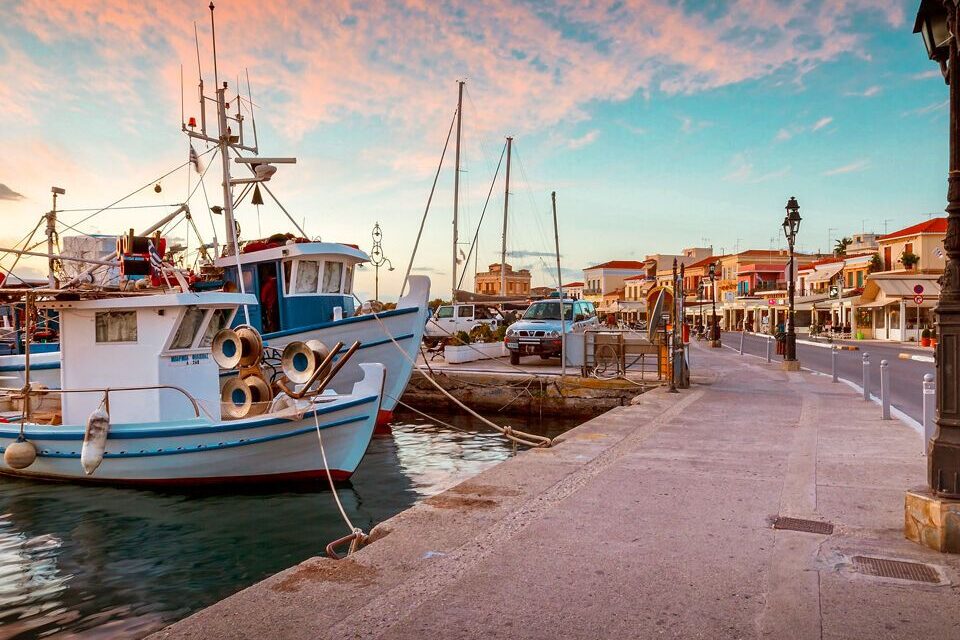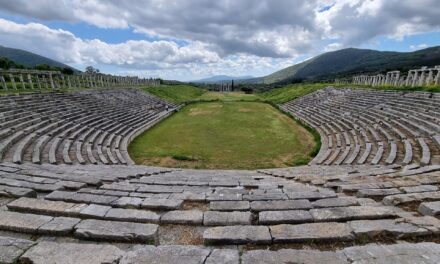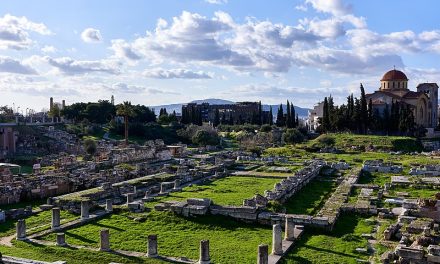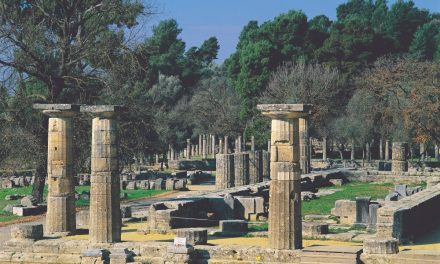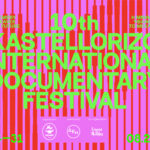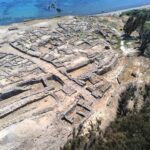Beyond its busy port, Aegina has the seductive, casual character of a typical Greek island, but with the added bonus of several important sites of historic interest. Weekenders from Athens liven up the mix of laid-back locals and travelers who use the island as an Athenian suburb. Aegina’s special delights PDO-designated pistachio nuts, the 5th-century classic Temple of Aphaia, and the impressive Byzantine ruins of Paleochora.
The island of Aegina is one of the most popular tourist destinations as it is the closest one to Athens (only 16.5 nautical miles from the port of Piraeus). For a brief period, from 1/11/1827 to 3/10/1829, the city of Aegina was the temporary capital of the newly founded Greek state. It was during this period that Governor Ioannis Kapodistrias, Greece’s first head of state, had impressive neoclassical mansions built to house his headquarters, which are well worth a visit. Aegina is the ideal place for a day trip from Athens but also as a destination for summer or spring vacations.
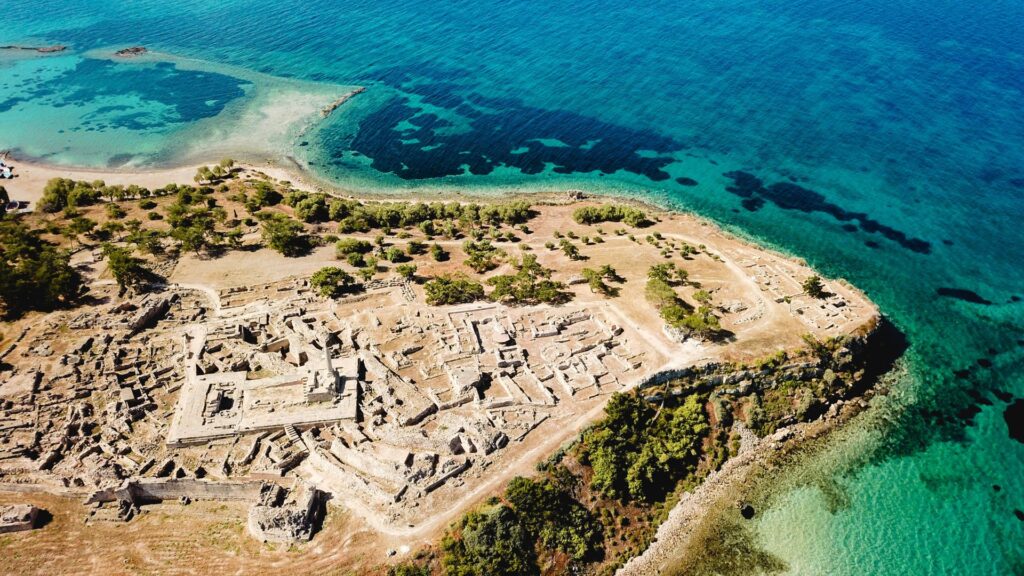
A little bit of mythology and history
Archaeological research has shown that the first inhabitants of the island settled in the area where Kolona is today, to the left of the port of Aegina (however, there are indications that there were inhabitants on the northeastern side). It is believed that they originated from the Peloponnese, and their main occupations were probably agriculture and fishing. From this time until the end of the 12th century BC, Aegina received successive influences from the Minoan and Mycenaean cultures, thus creating a distinct culture of its own.
In general, from mythical times until it was ravaged by the corsair Barbarossa, Aegina attracted more and more new settlers, who were constantly assimilated. The origin of its first inhabitants is lost in mythical traditions; King Aeacus and his subjects supposedly arrived in Aegina from some region of Thessaly around 8,OOO BC, already finding indigenous people there. Aegina constantly attracted new inhabitants because its natural harbors provided security, and its gentle terrain, with no high mountains or thick forests. Aeacus was famous for his justice, and after he died he became one of the three judges in Hades alongside Minos and Rhadamanthos.
When Aegina became a member of the amphictyonic league of Kalaureia (based on the Temple of Poseidon on modern-day Poros island), trade increased and its ships reached all the ports of the Mediterranean. At the beginning of its alliance with the king of Argos, Phaedo, in the 8th century BC, Aegina began to experience its greatest artistic and economic flourishing, which continued until 459 BC. The island’s rapid growth was mainly due to its key position across from the port of Piraeus. Athens’ only means of communication with most of the known world at that time was the sea. And these routes necessarily passed through Aegina, which profited from that fact.
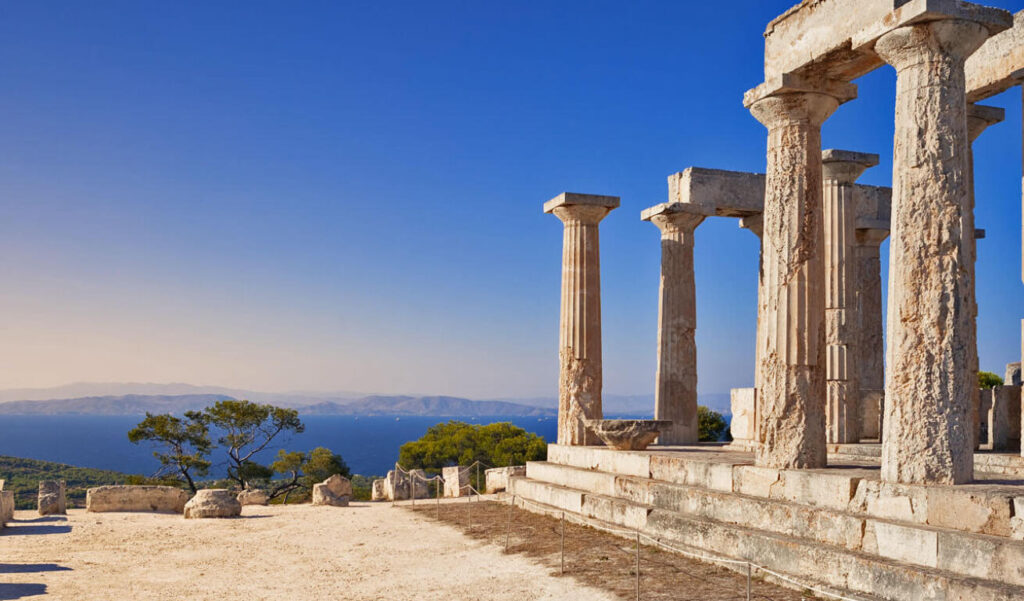
It was only around the 6th century BC, after the reforms of Solon, that the Athenians began to engage in trade, without yet posing a threat to the flourishing economy of Aegina. In 500 BC the population of Aegina reached 440,000, of which 40,000 were free citizens. At that time, the island was full of sanctuaries and temples, which were created by the island’s celebrated artists. Gradually, however, the locals began to be more concerned about the rise of Athens and its trade. Apart from their commercial, maritime and generally economic differences, Aegina and Athens were also divided by political ones, since Athens was a democracy, while Aegina was ruled by oligarchs controlled by merchants. When the Persian Wars first broke out, Aegina initially sided with the Persians, and they were blamed for this stance. 10 years later, however, in Xerxes’ campaign in 48O BC, the people of the island fought alongside the rest of the Greeks, participated in the naval battle of Salamis with 30 triremes and were distinguished for their bravery.
However, immediately after the naval battle of Salamis, the animosity with the Athenians was rekindled. On the pretext that Aegina wanted to ally with Corinth, the Athenians attacked the island and destroyed its fleet during a naval battle that took place in 459 BC off the modern-day island of Agistri. The Athenians forced the inhabitants to surrender their fleet, demolish their walls, and become tributaries to Athens. Altough things settled for some time, the start of the Peloponnesian Wars found the Athenians fearing that Aegina would side with the Spartans; they thus invaded it and expelled its inhabitants. Athenian families settled on the island, including those of Aristophanes and of Plato’s father, Ariston.
The inhabitants of Aegina fled to Sparta, in the region of Thyres, and returned at the end of the Peloponnesian War in 404 BC, when Lysander defeated the Athenians and captured their city. By then, however, Aegina had lost its former glory. It joined the Achaean League and later the Aetolian League. In 133 BC, Attalus III handed over the island and the entire state of Pergamum to the Romans, who used it as a resort for the rulers of the Roman Empire.
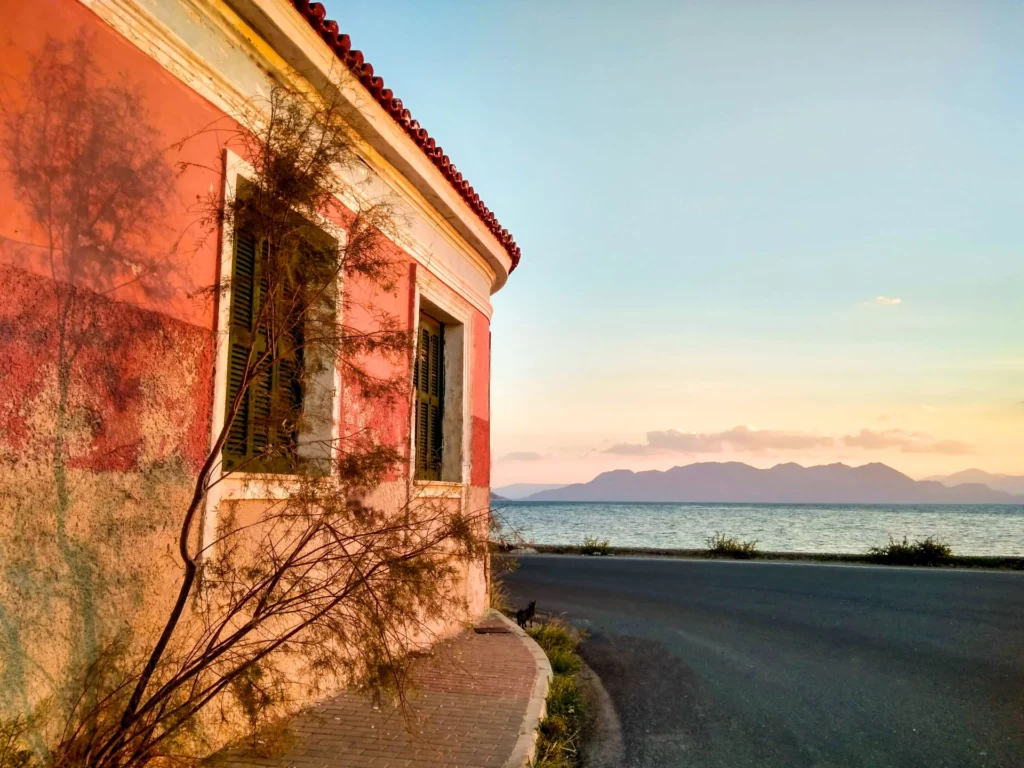
Many centuries later, in the period after the Greek Revolution, Aegina welcomed the first Governor of the free Greek state, Ioannis Kapodistrias. On January 12, 1828, on the beach of Perivola, the first Ioannis Kapodistrias, Modern Greece’s first head of state, arrived on the English warship Warspate, accompanied by the French Hera and the Russian Helen. On January 26, 1828, Kapodistrias was sworn in at the Cathedral of Aegina as the first Governor of Greece and Aegina became the first capital of the newly created State, becoming its administrative, commercial and intellectual center.
Its population grew rapidly and is estimated to have reached 100,000 inhabitants, although the General Gazette of Greece estimated it to be less. At this time, Aegina was home to a number of magnificent buildings, either to be used as residences for government officials and other wealthy people, or to be used as public buildings and institutions. After the transfer of the capital to Nafplion on in 1829, Aegina went through periods of economic crisis, while most of the inhabitants who had come here left the island and returned to their homelands.
In the late 19th and early 20th centuries, trade and especially fishing and sponge processing became the driving forces of the island’s economic development. This is the time when wealthy merchants built the neoclassical buildings that adorn the port of Aegina today. At the same time, the production of its famous jugs and the widespread use of local limestone helped the economy, even if only temporarily. At the same time, a new crop appeared in Aegina: the pistachio tree, whose first plants were brought to the island by Nikos Peroglou from Syria, to become in the following years the most important and effective crop, which not only gave Aegina an economic boom, but made it known again to the world, giving its name to this type of nut.
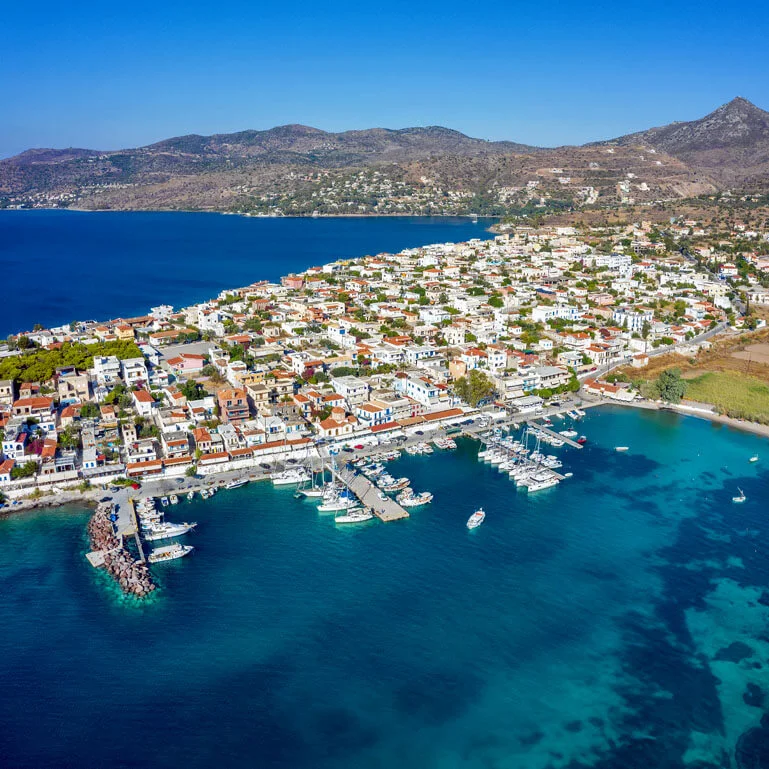
Moving on to the present day, Aegina is a destination appreciated mainly for the short distance that separates it from Attica, but also for its quaint beauty.
The city of Aegina, the capital of the island, stands out for its well-preserved buildings. The white church of Agios Nikolaos in the harbor and the brightly painted neoclassical buildings of the coastal boulevard are the first thing you see when you get off the ship. The neoclassical houses that dominate the harbor took their present form in the mid-19th century, when the island’s sponge industry developed. This is when when the houses were painted, and impressively designed balconies were added. The main commercial street is Aphaia Street, parallel to the coastal avenue.
Although the island is small, it boasts numerous sites of historical interest and natural beauty. During your stay, you will have the opportunity to explore ancient monuments and ancient monasteries, such as the Temple of Athena Aphaia, the most important monument on the island. Located near Agia Marina, it is a Doric temple dating back to 500 BC. The temple was founded there and formed an equilateral triangle with the Parthenon in Athens and the temple of Poseidon in Sounion, the so-called “sacred triangle” of antiquity. The most impressive part of the temple are its magnificent sculpted pediments, a large part of which are on display in the Munich Glyptotheque. Finds from the excavations are also on display in the Archaeological Museum of Kolona.
You can also visit the Temple of Apollo in Kolona. It is located a short distance from the port and owes its name to an upright column (kolona in modern Greek) in the Doric style, the only one remaining from the temple of the 6th century B.C. Kolona was the religious center of the ancient city. Archaeological research has revealed the existence of more than ten historic buildings dating from the Neolithic (5th millennium BC) to the Mycenaean period (1600- 1200 BC). You can see some of the finds from the excavations at the Kolona Archaeological Museum.
During your stay in the town of Aegina, be sure to visit the Archaeological Museum of Kolona, the Tower of Markellos, which was built by Markellos, hero of the War of Independence of 1821 and later Governor of the island, which today houses the Kapodistrian Cultural Center. Stop also at the Kapodistrian Orphanage, the first public building during Kapodistrias’ reign, and the Eynardio, a Doric-style building from 1829. Finally, visit the Cathedral of Aegina, the first cathedral of the modern Greek state, which also housed the Kapodistrian government and the first parliament of the modern Greek state.
In the surrounding area you can find pretty little villages with a strong traditional flair, such as Agia Marina, Perdika, Souvala, Kypseli, Agioi and Vagia. Aegina is also surrounded by many smaller islands, such as Moni, Metopi, Diaportia, Lagousses, Kyra, Dorousa and Spalathonissi, which can be visited by boat from the port of Aegina. The archaeological site of Paleochora, in Agia Marina, preserves the island’s heritage from the Byzantine period. This area is known as the “Mystras of Aegina” because it once had 565 churches, 28 of which (with excellent frescoes) have withstood the ravages of time, as have the ruins of the medieval castle and two magnificent monasteries. Near Paleochora, in the direction of Souvala, is the impressive monastery of St. Nektarios, one of the largest in the Balkans. It was built in the 20th century (between 1904 and 1910) on the site of a small Byzantine monastery.
Another interesting sight is the “Route of the Artists”; a beautiful coastal route from the port of Aegina to Plakakia (5 km, 1 hour) which you can take to follow in the footsteps of the great artists who were inspired by Aegina. Starting from the Varotsos sculpture in the harbor, the glass “Gate of Aegina”, you can head towards ancient Kolona and follow the Nikos Kazantzakis coastal road to photograph the Untitled sculpture by the great Yannis Moralis against the backdrop of infinite blue. After a stop at the romantic Bouza Lighthouse, continue straight ahead to the Statue of the Mother by painter and sculptor Christos Kapralos – you can also visit the museum of the same name. Finish the walk by admiring from outside the house where Kazantzakis, the writer who loved Aegina and its unique light, lived.
Translated from the original article which appeared on Pamorama Griego (Image source: Visit Greece [except where cited])
Read also via Greek News Agenda: Visit Nafplion, One of Europe’s Most Beautiful Towns; The medieval ghost town of Mystras; Hydra: a haven for international artists; There are over 100 Greek PDO products
TAGS: ARCHEOLOGY | HERITAGE | TOURISM

